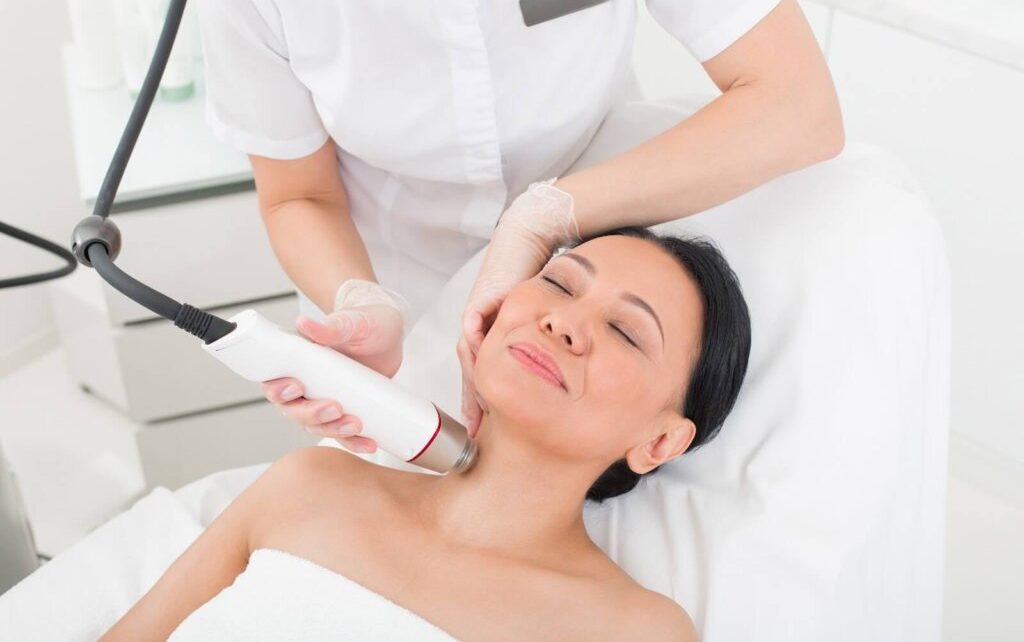Laser treatment isn’t one of those self-care treatments you anticipate. You’re not soaking in a salt bath, having your muscles massaged into submission, or reveling in your skin’s post-facial dewy glow.
No, you’re undressing in front of a stranger, having the body parts zapped, and leaving with some red, angry hair roots. But it’s one particular self-care treatments that pays dividends in the long run: You are able to slash amount of time in the shower, just forget about waxing appointments (that are equally painful), rather than worry about lifting your arms to overhead press only to find you forgot to shave for the umpteenth day in a row. (You will not have to shave again, generally.)
If you want to keep the body hair natural and ungroomed, that’s cool. But if you wish to part ways with your unwanted hair-for good-nixing razor bumps, shaving nicks, and ingrown hairs, here’s everything you need to understand about laser treatment, according to board-certified dermatologists, certified laser technicians, and medical estheticians.
1. The very best modern laser treatment systems aren’t painful.
The most up-to-date systems including the Soprano Ice Platinum and the new Soprano Ice Titanium are nearly pain free. Most clients only experience a gentle warming sensation in the region being treated with some feeling an extremely mild pins and needles sensation. Other laser systems have differing degrees of pain associated with them from mild to Ouch!
2. There are a variety of different skin cooling methods on offer to reduce pain and make the procedure safe.
It’s important to consider the cooling method employed by the laser system as this factors greatly in treatment comfort and safety. Typically 1 of 3 different cooling methods are built into modern laser hair removal near me systems.
3. There will vary types of laser wavelengths available.
Picking a laser that is most effective for your skin layer and hair type is of essential importance to make sure your treatment is effective and safe.
IPL – (Not laser) Much less effective as diode in face to face studies rather than good for all skin types. May require more treatments. Typically more painful treatment than diode.
Alex – 755nm Best for lighter skin types, paler hair colours and fine hair.
Diode – 810nm Good for many skin types.
ND: YAG 1064nm – The best option for darker skin types and darker haired patients.
Modern laser systems frequently employ 2 and regarding Soprano Ice Platinum 3 laser wavelengths. The more wavelengths covered in a single treatment will generally mean a more effective result.
4. There are different treatment techniques that can feel very different while obtaining the same goal.
Standard laser systems operate by using a ‘shots’ method. This functions by exposing hair roots to an individual high energy pulse then moving the apparatus slightly and administering another pulse. While a coolant system is usually employed to make this method more bearable, (however, not on older laser models) it could be rather painful and have an increased risk of complications. Also at the least 6 weeks wait before treatment after any sun exposure is usually required, hardly convenient over our increasing hot and sunny Summers.
Soprano Ice and Soprano Ice Platinum work in different ways by emitting 10 lower power pulses per second as the treatment applicator is moved backwards and forwards over a location. This slowly but surely heats the dermis to a temperature that effectively damages the hair roots and prevents re-growth, while avoiding problems for the encompassing tissue. Contact cooling ICE technology cools your skin surface- preventing skin surface damage that allows for nearly painless yet highly effective hair removal.
5. Visit like clockwork.
6 to 8 8 treatments are recommended to accomplish maximum results with some more robust hair growth areas such as the face and private area possibly needing more treatments. Facial laser hair treatments should be every 4 weeks for the first 4 treatments then every 4-6 weeks thereafter. Body laser treatment treatments are performed every 6 weeks for the first 4 treatments then every 6-8 weeks after that.
6. How many treatments?
Laser hair removal will only treat hair in the Anagen phase of growth, roughly 10-15% of the hair in virtually any particular area will be as of this phase anytime. Each treatment, 4-8 weeks apart will treat different hairs at this stage of their life cycle so you might see up to 10-15% decrease in hair per treatment. Most people will go for 6 to 8 8 treatments per area, possibly more to get more resistant areas including the face or private area.
7. Patch testing is essential.
It’s important to patch test before a laser treatment treatment, in case you experienced laser treatment at some other clinic before. The task allows the laser therapist to check on that your skin layer is well suited for laser hair removal and can also give you the chance to ask any questions you might have. A general inspection of your skin will need place and then a tiny area of every part of the body you would like to treat will be exposed to the laser light. Furthermore to ensuring no effects occur, this also provides the clinic with the possibility to tailor the machine’s settings to your personal requirements to ensure safety and treatment comfort.
8. Preparation is key
Aside from shaving, avoid some other hair removal methods such as waxing, threading or hair removal creams for 6 weeks prior to treatment. Avoid sun exposure, sunbeds or any kind of fake tan for 2 – eight weeks (depending on laser model). It’s important to shave any area to be treated with laser to guarantee the session is safe and effective. The optimal a chance to shave is just about 8 hours before your appointment time.



